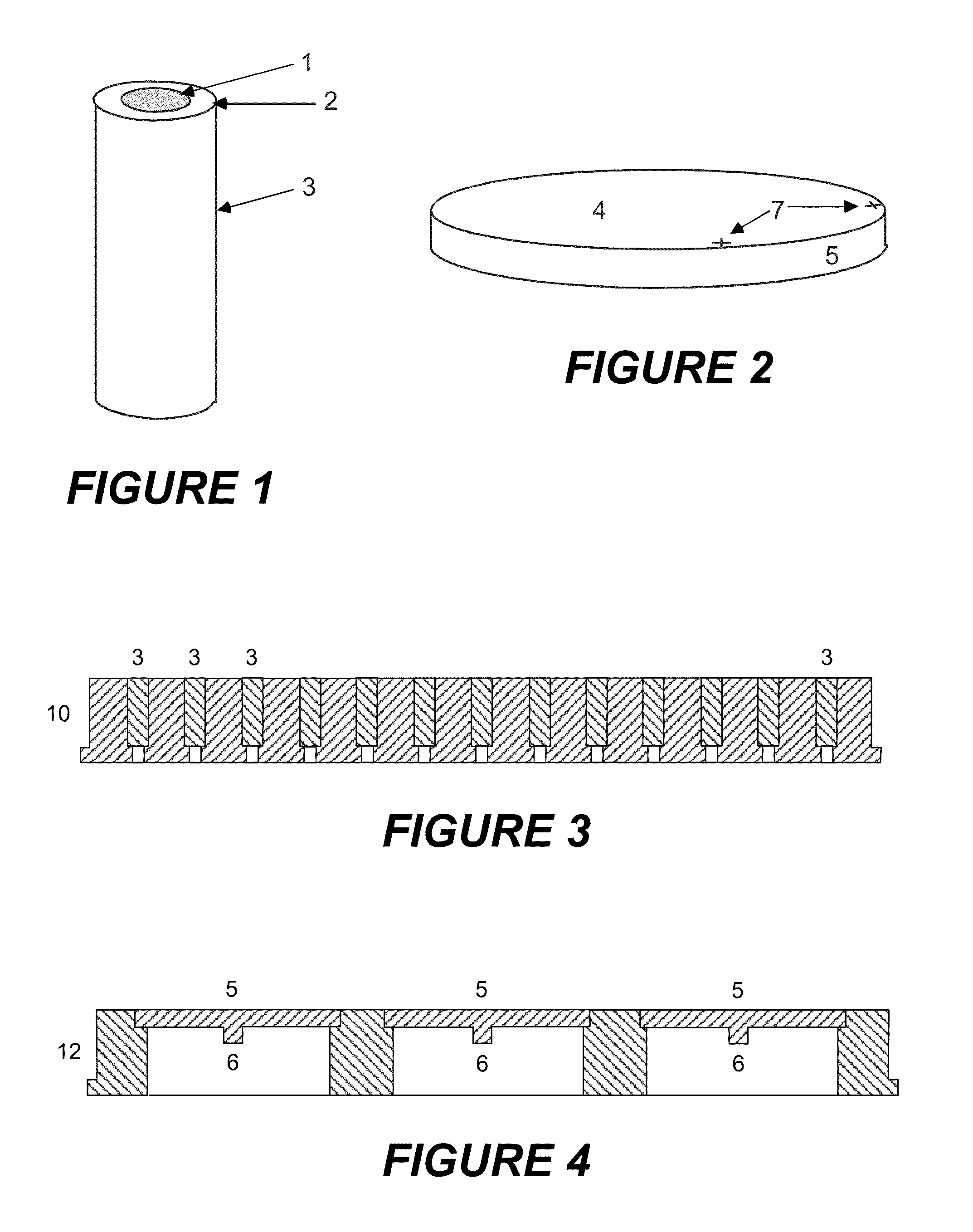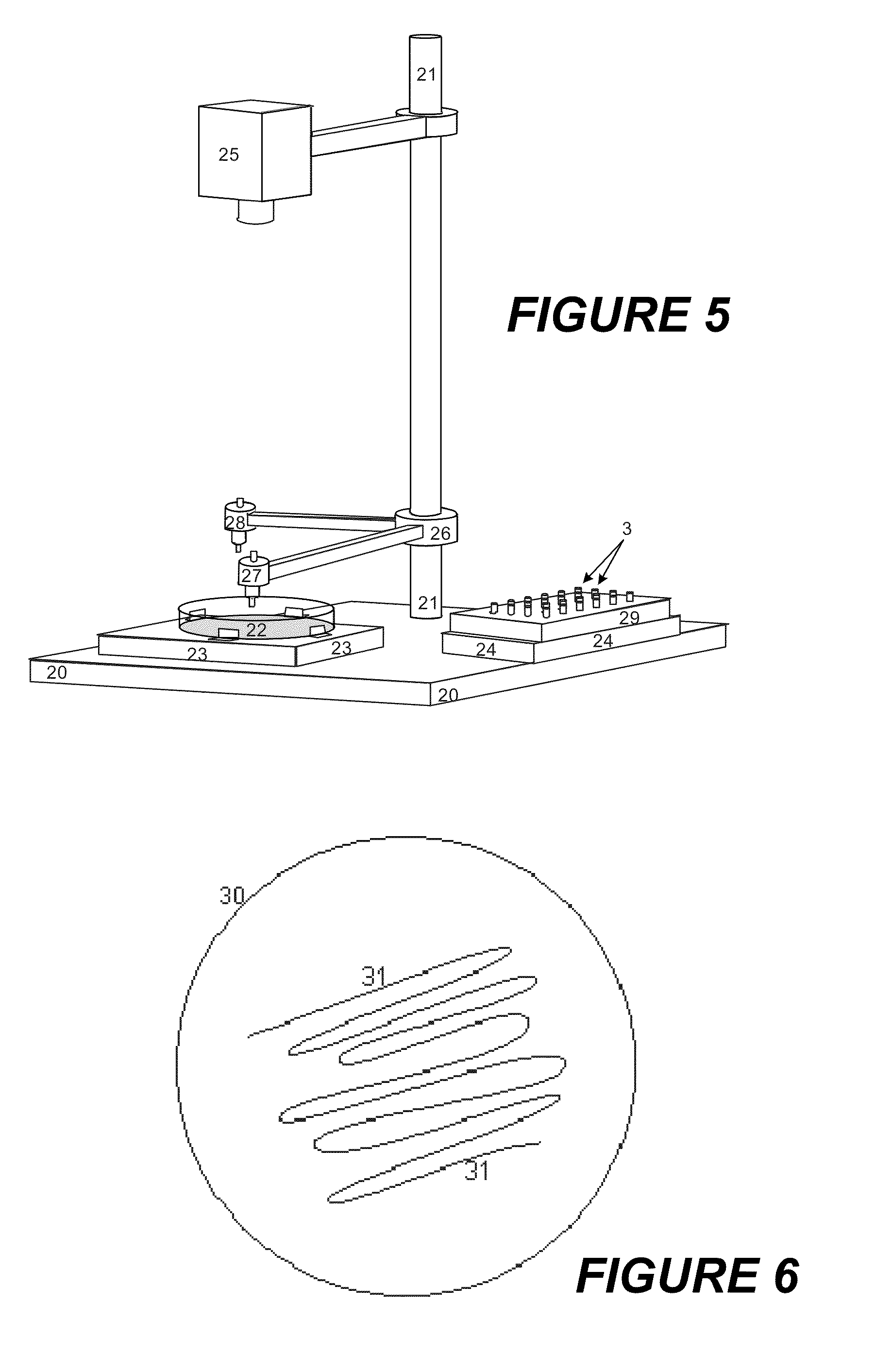Analysis of microbes from microcolonies by maldi mass spectrometry
a mass spectrometry and microbe technology, applied in the field of mass spectrometric analysis of microorganisms, can solve the problems of too many applications, and achieve the effects of less microorganism material, low cost, and high sensitivity
- Summary
- Abstract
- Description
- Claims
- Application Information
AI Technical Summary
Benefits of technology
Problems solved by technology
Method used
Image
Examples
Embodiment Construction
[0035]For the embodiments described below, a sample for analysis with unknown microbes, usually bacteria, is plated (inoculated) in the usual way onto agar in a Petri dish, and cultured in an incubator for six to eight hours at optimum temperature (usually 37° Celsius). Most of the clinically relevant, pathogenic microbes divide after periods of between 15 and 45 minutes (this is called the “generation time”). In six hours, virulent microbes experience 24 generations, slower ones with 45 minutes generation time only about eight generations. After ten generations, the microcolonies should theoretically contain around 103 microbes; after twenty generations, around 106 microbes. The colonies grow on the surface of the nutrient medium; at higher numbers of generations, however, the growth on the agar is so strongly restricted that the theoretical values are not achieved. There are also clinically important exceptions with slow growth which require special treatment.
[0036]The cell disrup...
PUM
| Property | Measurement | Unit |
|---|---|---|
| diameters | aaaaa | aaaaa |
| diameter | aaaaa | aaaaa |
| diameters | aaaaa | aaaaa |
Abstract
Description
Claims
Application Information
 Login to View More
Login to View More - R&D
- Intellectual Property
- Life Sciences
- Materials
- Tech Scout
- Unparalleled Data Quality
- Higher Quality Content
- 60% Fewer Hallucinations
Browse by: Latest US Patents, China's latest patents, Technical Efficacy Thesaurus, Application Domain, Technology Topic, Popular Technical Reports.
© 2025 PatSnap. All rights reserved.Legal|Privacy policy|Modern Slavery Act Transparency Statement|Sitemap|About US| Contact US: help@patsnap.com


